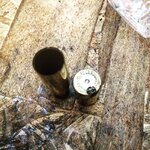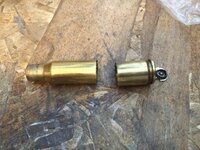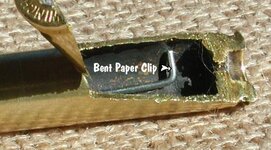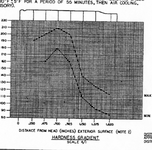Bronze Supporter
- Messages
- 1,249
- Reactions
- 972
Here's a picture of a 300 blackout case that recently broke in half on firing. The case was a modified Nato 5.56 that I purchased as complete ready to load. Loaded by myself on progressive press using the H110 powder that I'd been complaining about metering issues. This was supposed to be an 18.5 grain load on a 110 grain Zmax bullet.
Not sure if it was an over load on the powder or a bad casing to begin with or fired prior to full seating or?? Needless to say I'm going to pull down the last 10 of these unfired and check powder load consistency.
Any ideas are welcomed..
The upper half of the case was in the and the back half got stuck on top of the carrier above the next incoming round. Took me out of any chances of fighting if it had been required. The front half of the casing was not visible to me initially I only assumed that it was in the ..... What would have happened had i tried to load another round?


Not sure if it was an over load on the powder or a bad casing to begin with or fired prior to full seating or?? Needless to say I'm going to pull down the last 10 of these unfired and check powder load consistency.
Any ideas are welcomed..
The upper half of the case was in the and the back half got stuck on top of the carrier above the next incoming round. Took me out of any chances of fighting if it had been required. The front half of the casing was not visible to me initially I only assumed that it was in the ..... What would have happened had i tried to load another round?

















